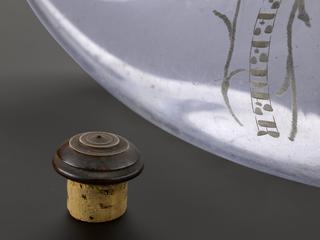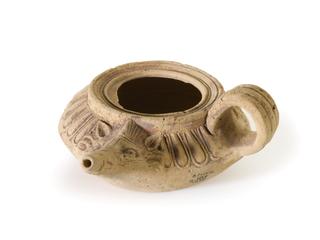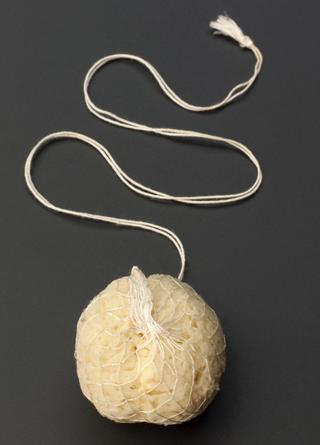
Section of wooden water pipe laid by the New River Co.
- Made:
- 1600-1800 in United Kingdom
- maker:
- New River Company, The




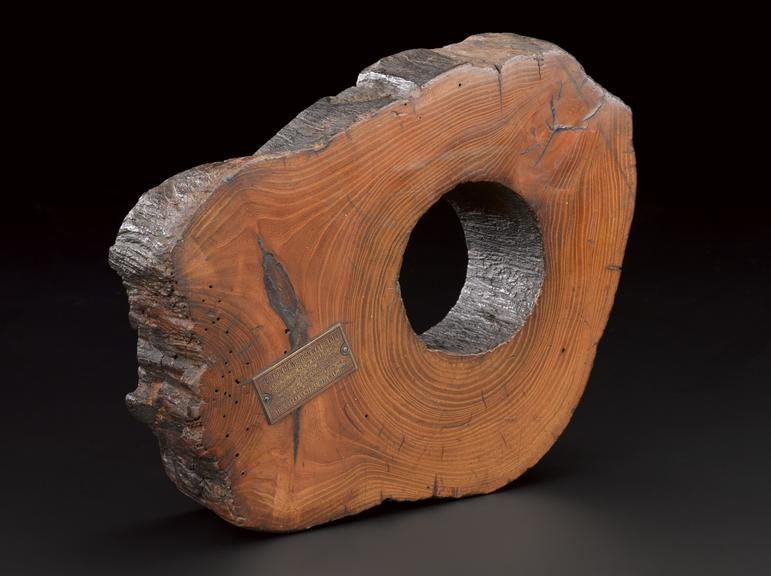
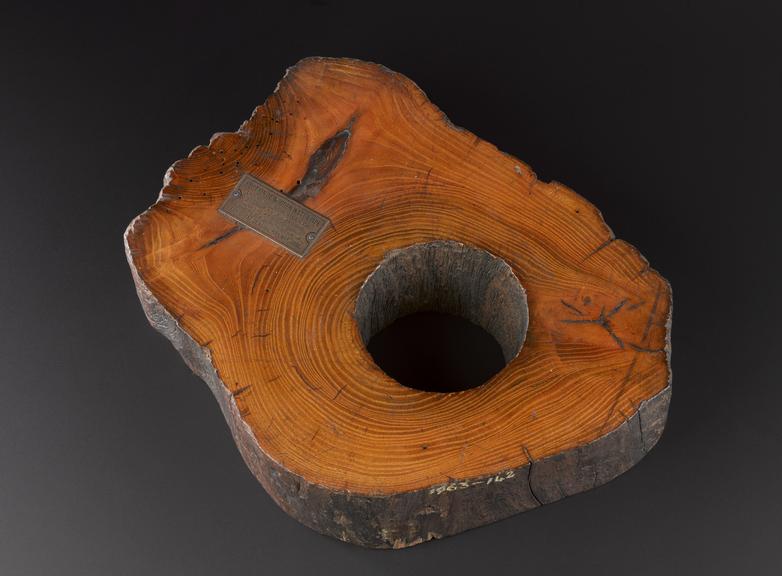

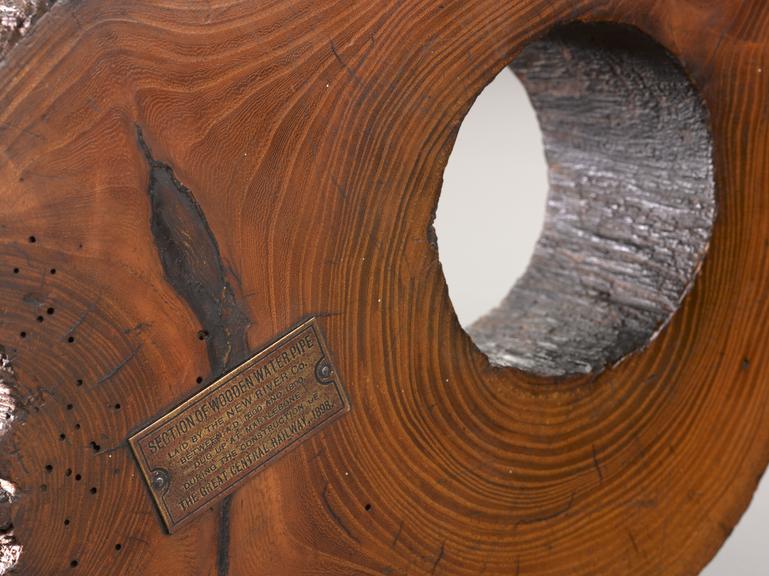
Section of wooden water pipe laid by the New River Co., 2 1/2 inches thick and assumed to be elm, with mounted metal inscription plate stating that it was laid between 1600 and 1800 and dug up at Marylebone, London, during the construction of The Great Central Railway, 1898.
This short, cut section of pipe – with its small commemorative plaque – was once part of the first significant attempt to bring fresh water, at scale, to the city of London. This was in response to the inadequacies in existing supplies of fresh water in catering for the needs of the city’s growing population during the later part of the 16th century. The so-called New River was a means of bringing water from natural springs found north of the capital in Hertfordshire down to the outskirts of the city.
The driving force behind the design and construction of the system was Sir Hugh Myddelton (1560-1631), an early industrial entrepreneur. Work commenced on his scheme in 1609 and involved digging a channel around ten feet wide and four feet deep feet, at a gradient of around five inches a mile, for a distance of about 40 miles. This gentle flowing ‘river’ was completed in 1613 and terminated in a reservoir in north London known as the New River Head. From there lengths of pipes, made from hollowed-out elm trees, were connected to take the water down to the city then form a network under the London streets. For a price, households and businesses could link into the supply.
Over time, the wooden pipes were by-passed and replaced with less leaky alternatives and many were dug up in the course of building work. This is a section of pipe found during the construction of the London extension of the Great Central Railway, at Marylebone, in 1898.
Details
- Category:
- Water Supply Metering
- Object Number:
- 1963-142
- Materials:
- Wood and Copper alloy
- Measurements:
-
overall: 283 mm x 217 mm x 60 mm, 1.35 kg
- type:
- pipes (conduits)
- credit:
- York, R.

